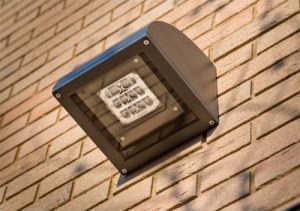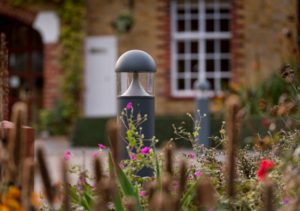The experts at Kingfisher Lighting talk about the art of exterior schemes and what to look out for to avoid falling foul of poor design.
With over 30 years of Lighting Design experience under their belt, Kingfisher Lighting have seen all manor of schemes, in all manor of states! There is a big misconception that designing lighting schemes is an easy, straight forward task with standard layouts for every job, ‘anyone can do it’. On the contrary, there are many factors to consider in getting the best out the luminaires, as well as taking account of environmental factors, energy efficiency and cost effectiveness.
A Fitting Choice
With a market full of products, how do you choose the best for your scheme? How can you guarantee quality? And does ‘Made in Britain’ really mean what it says? Upgrading an exterior lighting scheme can be an expensive job, so making sure the new fittings are going to give you most efficient output for your money is imperative.
Kingfisher recommend that you ask for documentation such as test certificates and CE marking to ensure the specification of the product is correct and passes all relevant tests.
Avoid mass produced copies – some companies may offer cheap ‘off the shelf’ products that may not hold up to the quality, efficiency or life expectancy of more quality brands.
Some companies claim their products are ‘Made in Britain’ and proudly display the official logo to add clout to their quality claims. This may not be strictly true, it may be the result of simple product alterations. This shows the importance to checking the origins of potential products.
LED Equivalents – Harder than it looks!
A lot of companies state particular products are equivalent to other metal halide or SON fittings, some with no evidence to back up their claim. This shines a light on the importance of checking the specification, distribution and ROI of all lights to ensure you are getting the closest equivalent and not buying into cheap design tricks. Be sceptical of huge energy saving claims and picking a product with the right optic can be far more important than matching the lumen output. For instance, it is actually possible for a seemingly less efficient fitting to do a better job at lighting a specific area as the optics are designed to put the light in the right place.
It is important to remember that it is hard to assess how a fitting will perform until the design has been completed.
The Good
Many customers will automatically lean towards the cheapest options, especially for non-architectural lighting such as flood or area lighting. Experienced designers will look at the overall picture; possibly recommending a more expensive fitting but reducing the number of fittings and positions needed on site. This in turn reduces installation costs, as well as lowering energy usage over the site and therefore offers a much better value of design.
Good design will also take into consideration environmental factors, whether this be light pollution for local residents or wildlife considerations. All these factors will assist in the getting the most efficient, cost effective and long-life scheme.
The Bad and the Ugly
Good design will adhere to British Standards and work to best practice guidance, but many companies try to take the edge over the competition by cutting corners.
A prime example of this is cheating on maintenance factors. All designs should employ a maintenance factor to ensure that the lighting achieves the specification after a period of time, allowing for the build up of dirt and of course depreciation of the fitting. Kingfisher strongly recommend that this is taken into consideration and maintenance factors challenged on any design, making sure they adhere to the relevant British Standards.
Another example of corner cutting is the manipulation of calculation points as this will have a huge impact on the completed design. Some companies try to stretch the limits of spacing points in order to offer a design requiring fewer fittings but pushing this can cause poor uniformity.
Take into consideration the ‘tilt’ of the chosen fitting, many suppliers may try to manipulate the performance through tilting the fitting beyond its recommended position. This could increase glare, as well as upward light pollution, as well as affecting the aesthetic of the design.
Risk Migration
There are many ways bad or ill-experienced designers can try to manipulate designs to give seemingly better results, so what can be done to reduce the risk of falling foul to bad design?
With the offer of free lighting design software, many companies are ‘trying their hand’ at designing lighting schemes for customers. This poses a real issue as many people do not hold correct and current qualifications and experience to create quality designs, this could not only add unnecessary costs but could be potentially very dangerous.
Kingfisher Lighting strongly recommend that all lighting designs are completed by a fully qualified and experienced lighting designer who are accredited members of leading professional bodies such as the ILP or SLL.
Round-up
So, in conclusion some of the main points to consider when looking at quality lighting design are as follows;
- Seek quality product with proper certification (CE marking and test certificates)
- Make sure the company and the designers are properly accredited and qualified
- Look for evidence of design ’tweaking’
- Investigate claims into performance and life
Kingfisher Lighting offer a range of CPD’s including ‘Best Practice – Lighting Design’. For more details or to talk to the experts visit Kingfisherlighting.com
Kingfisher Lighting
01623 415900
sales@kingfisherlighting.com
www.kingfisherlighting.com





